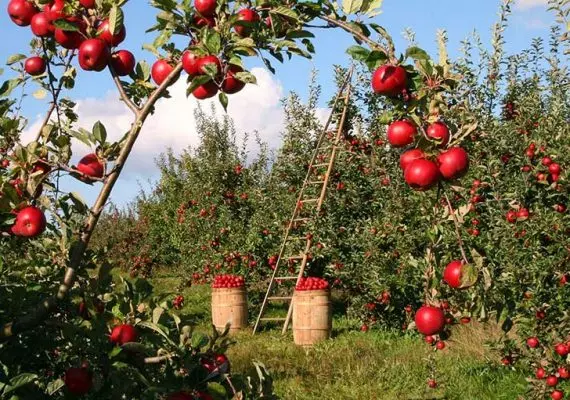
Poland is a country where agriculture plays a huge role in the national economy. In this sector, 2,327,300 people work, which constitutes 14.18% of the total number of people employed in Poland. Most of these individuals work on farms, which occupy 46.46% of our country's area. The total area of agricultural land in Poland is 14,490,077 hectares, with orchards covering as much as 361,965 hectares. Over 80% of orchards are located in four provinces: Mazowieckie (130,646 ha), Lubelskie (80,190 ha), Łódzkie (43,993 ha), and Świętokrzyskie (34,889 ha). In these provinces, the share of very acidic and acidic soils exceeds 50%, with their highest proportion being in the Łódzkie province at 66% and Mazowieckie at 62% (Fig. 1).
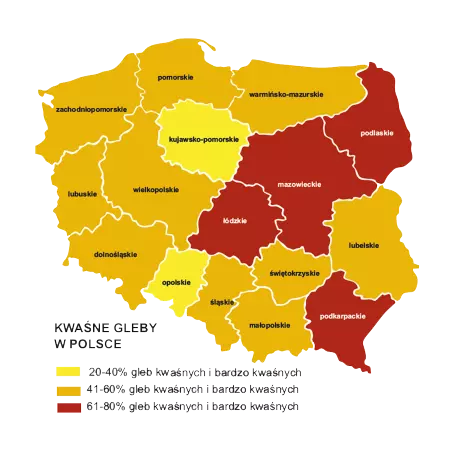
Fig. 1. Soil acidification status in agricultural lands in Poland (source: IUNG-PIB Puławy)
The progressive acidification of soils is a natural process associated with Poland's geographical location. Natural and human-induced processes annually cause losses of calcium in soil of at least 140 kg CaO·ha-1, and under intensive cultivation and fertilization, especially nitrogen fertilization, and in heavily polluted areas, even exceeding 250 kg CaO·ha-1. Neutralizing the acidifying effect of 1 kg of nitrogen requires at least 1.0-1.5 kg of CaO. Available statistical data indicates that on average, for every 1 kg of nitrogen applied in Poland, 0.67 kg of lime is used, leading to soil acidification, especially in intensively used areas, including orchards. In soils with a pH of 5.0 and lower, aluminum mobility increases, leading to root growth inhibition and phytotoxic effects on root hairs, causing their death. This adversely affects water and mineral salt transport from the soil solution to the above-ground parts of fruit trees and bushes. Additionally, roots are more susceptible to infection, especially by pathogens. A high concentration of aluminum in the soil solution inhibits calcium and magnesium uptake and transport. Calcium deficiency reduces orchard yields and also affects the commercial quality of the obtained fruits. In the case of severe calcium deficiency, more acid pit is observed on apples, rendering them unsuitable for commercial sale (Fig. 1).
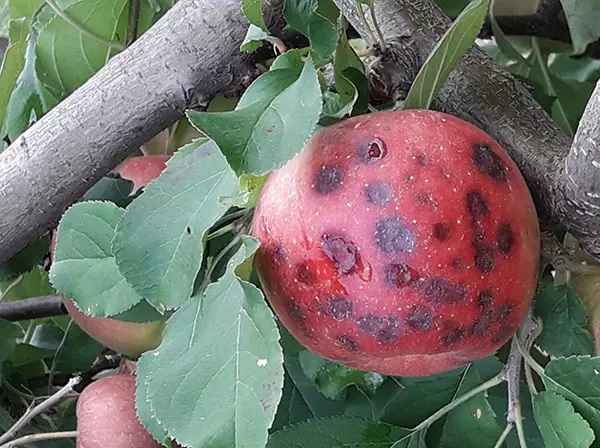
Fig. 1. Bitter pit (author: Dr. Eng. P. M. Szulc)
Fruits affected by this disease can only be used in processing, significantly reducing the income obtained from apple sales. Therefore, lime application in orchards is essential for fruit growers. Correct soil liming before orchard establishment is particularly important. At that time, powdered lime such as Polcalc AgroLuz Calcium is applied in doses determined based on soil chemical analysis results conducted by accredited laboratories, e.g., District Chemical-Agricultural Stations (OSCHR). The dosage of Polcalc AgroLuz Calcium lime depends on the soil agronomic category and the observed pH (Table 1, Table 2).

Table 1. Maximum doses of lime fertilizers (kg·ha-1) are applied once in orchards and berry plantations according to Nurzyński (source: K. Pitura 2012)

Table 2. Lime doses on arable land in tons of CaO·ha-1 (source: G. Hałubowicz-Kliza 2006)
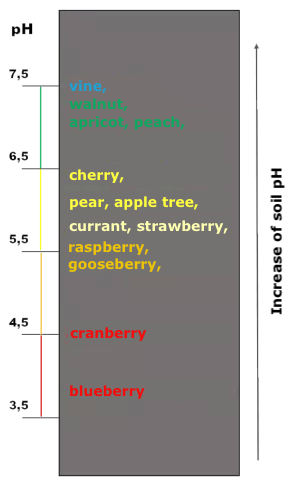
Fig. 2. Requirements of selected fruit plants regarding soil pH (source: G. Cieśliński 2005)
Lime applied in autumn should be thoroughly mixed in the arable layer of the soil. This procedure is particularly important because in subsequent years after establishing the orchard, plowing, which returns nutrient elements washed into lower soil layers to the soil surface, is not carried out on arable soils. Therefore, the applied dosage of Polcalc AgroLuz Calcium lime should raise the soil pH to slightly acidic or even neutral. These pH values are optimal for most fruit trees and bushes cultivated in Poland (Fig. 2).
It should be noted that lime application should not be combined with the use of organic and mineral fertilizers - nitrogenous and phosphorus fertilizers, regardless of the timing of this procedure. The interval between the application of these fertilizers and liming should be 4-6 weeks.
In the following years of orchard cultivation, only top-dressing fertilization in the herbicide strip is applied. Then, after fruit harvesting, carbonate granulated lime Polcalc III Generation or in case of low magnesium content in the soil, granulated magnesium carbonate lime SuperMag should be used. The amounts of these fertilizers depend, among others, on the type of soil, the amount of precipitation, the amount of water supplied in drip irrigation, the doses of nitrogen fertilizers applied, and the harvested fruit yield. The approximate annual doses of carbonate granulated lime Polcalc III Generation and/or granulated magnesium carbonate lime SuperMag should be about 600-1000 kg·ha-1. Liming raises the soil pH, thus increasing the availability of macronutrients taken up by plants and the biological activity of the soil. A neutral soil pH (pH 7.0) enables maximum uptake of macronutrients by plants. However, it has been shown to slightly reduce the uptake of some micronutrients (Fig. 3, Fig. 4).
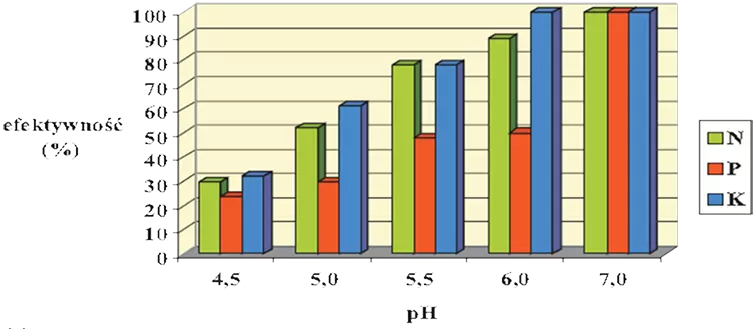
Fig. 3.
Macronutrient uptake efficiency with increasing pH (source: G. Hałubowicz-Kliza 2006)
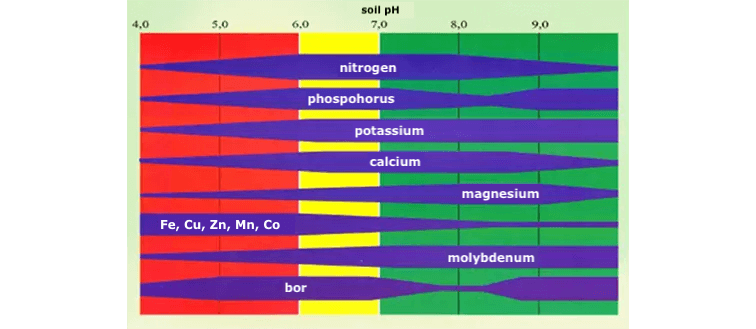
Fig. 4.
Micronutrient uptake efficiency with increasing pH (according to Kopcewicz et al. 2007)
Granular lime fertilizers supplied by Polcalc Sp. zo.o. are produced from ground limestone - Polcalc III Generation or magnesite - SuperMag, with 50% of particles having a diameter smaller than 0.02 mm. The degree of grinding of the meal affects its chemical activity and the rate of dissolution in the soil environment. The more dusty fractions the fertilizer contains, the greater its reactive surface area with soil solutions. These meals are then subjected to the granulation process, and the obtained granules of Polcalc III Generation or SuperMag lime have sizes of 2-8 mm (Fig. 5).
Information about distributors of granulated lime fertilizers:
You can obtain Polcalc III Generation and SuperMag granulated lime fertilizers by calling 880-880-801 or online at www.polcalc.pl
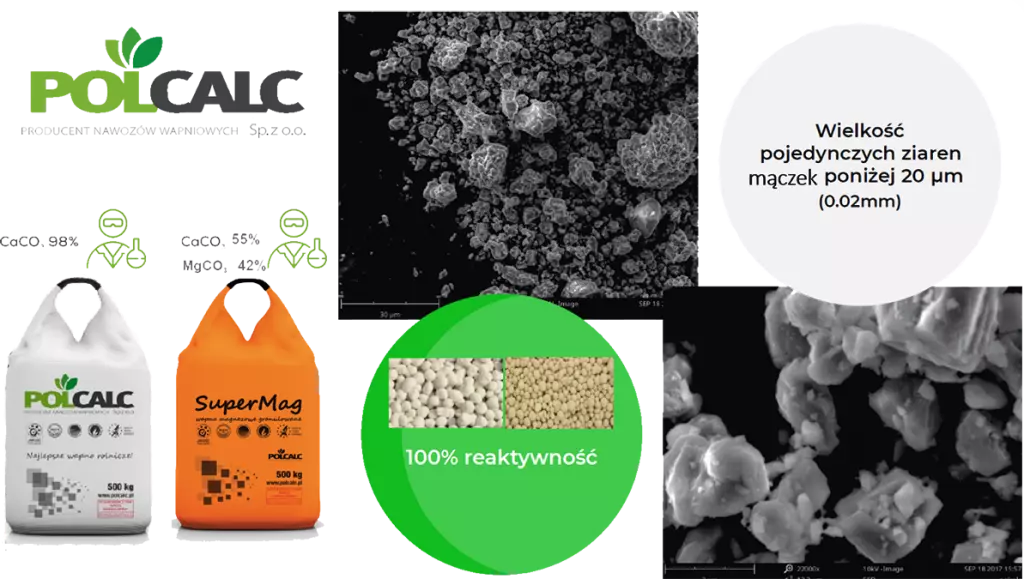
Ryc. 5. Wybrane właściwości granulowanych nawozów wapiennych produkowanych przez Polcalc Sp.zo.o.






